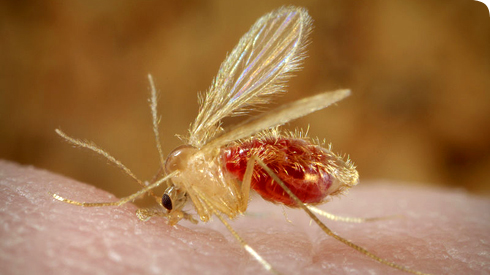Diseases
Phlebotomus papatasi is the main transmitter (or vector) of:
- the protozoan Leishmania major, the causative agent of zoonotic cutaneous leishmaniasis (World Health Organization, 2009)
- some sandfly-fever serogroup arboviruses of the genus Phlebovirus that cause episodic fevers in people living in Mediterranean countries and southwest Asia (Liu et al., 2003)
Leishmaniasis
The transmission cycle of zoonotic cutaneous leishmaniasis usually involves gerbils as reservoir hosts. It is a model for basic research on leishmaniasis aimed at developing vaccines and other methods of disease control (reviewed in Ready, 2008). Other forms of leishmaniasis occur in Europe, and the public health risks have been reviewed recently (Ready, 2010).
Research topics include:
- cell-mediated immunity
- Leishmania and Phlebotomus genome organisation (both with genome sequencing projects)
- the molecular genetics of the development of infective parasites in permissive and specific vectors (Bates, 2007)
- the role of sandfly salivary peptides (Oliveira et al., 2008) in facilitating blood feeding and controlling disease progression
Most strains of Le. major are able to develop infective stages only in P. papatasi or closely-related sandflies, and the gerbil reservoirs often need to be co-infected with a related parasite (Le. turanica) if they are to support the over-wintering of Le. major. The complexities of these transmission cycles can be monitored using DNA markers to identify parasites and their sandfly hosts (Parvizi and Ready, 2008).
Toolbox
Glossary
Reservoir host
The long-term host of a parasite that causes an infectious disease in humans. The parasite generally doesn't cause any ill-effects in the reservoir host.
Zoonotic
A zoonotic disease is one that affects animals and can be transmitted to humans.
